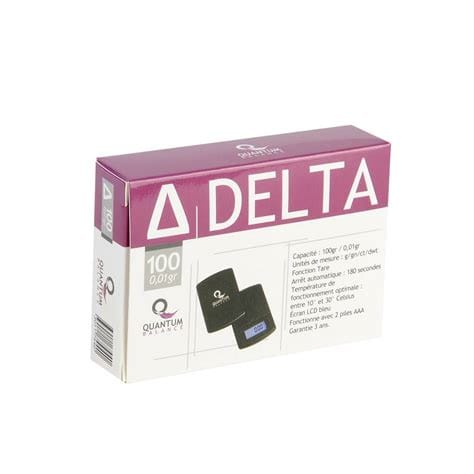Introduction to Quantum Computing
Quantum computing is a rapidly advancing field that harnesses the principles of quantum mechanics to solve complex problems that are beyond the capabilities of classical computers. Unlike classical computers, which rely on bits that can only be in one of two states (0 or 1), quantum computers use quantum bits, or qubits, which can exist in multiple states simultaneously. This property, known as superposition, allows quantum computers to perform certain calculations exponentially faster than their classical counterparts.
The Potential of Quantum Computing
Quantum computing has the potential to revolutionize various industries, including:
- Cryptography: Quantum computers could break current encryption methods, necessitating the development of quantum-resistant cryptography.
- Drug discovery: Quantum simulations could accelerate the process of identifying new drug candidates and optimizing their design.
- Financial modeling: Quantum algorithms could be used to optimize portfolio management and risk assessment.
- Climate modeling: Quantum computers could help improve the accuracy of climate models and predict the effects of climate change more effectively.
The Role of Electronics in Quantum Computing
Traditionally, quantum computers have relied on electronic components to control and manipulate qubits. These components include:
Superconducting Qubits
Superconducting qubits are one of the most promising technologies for building scalable quantum computers. They are made from superconducting circuits that can be engineered to behave like artificial atoms, with discrete energy levels that can be used to encode quantum information.
| Advantages | Disadvantages |
|---|---|
| Scalability | Sensitivity to environmental noise |
| Compatibility with existing manufacturing | Requires cryogenic temperatures |
| Fast gate operations | Limited qubit connectivity |
Spin Qubits
Spin qubits use the spin states of electrons or nuclei in semiconductor devices to encode quantum information. They offer the potential for long coherence times and compatibility with existing semiconductor manufacturing processes.
| Advantages | Disadvantages |
|---|---|
| Long coherence times | Slow gate operations |
| Compatibility with existing manufacturing | Difficulty in achieving high-fidelity readout |
| Potential for high scalability | Requires cryogenic temperatures |

The Emergence of Photonic Quantum Computing
While electronic quantum computing has made significant progress, photonic quantum computing has recently gained attention as a promising alternative. Photonic quantum computers use photons, or particles of light, to encode and process quantum information.
Advantages of Photonic Quantum Computing
- Room temperature operation: Photonic qubits can operate at room temperature, eliminating the need for complex cryogenic systems.
- Low noise: Photons are less susceptible to environmental noise, which can lead to longer coherence times and more reliable quantum operations.
- Compatibility with existing optical infrastructure: Photonic quantum computers can leverage the existing optical communication infrastructure, enabling long-distance quantum communication and networking.
Challenges in Photonic Quantum Computing
Despite its advantages, photonic quantum computing faces several challenges:
- Scalability: Building large-scale photonic quantum computers requires the development of new manufacturing techniques and the integration of multiple optical components.
- Photon loss: Photons can be easily lost during transmission, which can limit the size and complexity of photonic quantum circuits.
- Deterministic photon sources: Generating single photons on demand with high efficiency and purity remains a challenge.

The Shift in Balance: New Chips for Photonic Quantum Computing
Recent advancements in photonic chip technology have begun to address the challenges faced by photonic quantum computing, potentially shifting the balance in favor of this approach.
Integrated Photonic Chips
Integrated photonic chips combine multiple optical components, such as waveguides, beam splitters, and phase shifters, on a single chip. These chips offer several advantages:
- Scalability: Integrated photonic chips can be manufactured using existing semiconductor fabrication techniques, enabling the production of large-scale photonic quantum circuits.
- Stability: The compact and monolithic nature of integrated photonic chips makes them less susceptible to environmental fluctuations and misalignment.
- Reduced photon loss: By confining light within waveguides, integrated photonic chips can minimize photon loss during transmission.
Quantum Dot Single-Photon Sources
Quantum dots are nanoscale semiconductor structures that can emit single photons on demand. Recent advances in quantum dot technology have led to the development of high-efficiency, high-purity single-photon sources that can be integrated with photonic chips.
| Advantages | Disadvantages |
|---|---|
| High efficiency | Limited operating wavelengths |
| High purity | Sensitivity to environmental fluctuations |
| Compatibility with photonic chips | Complexity in fabrication and integration |

The Future of Quantum Computing: Electronics vs Photonics
The future of quantum computing will likely involve a combination of electronic and photonic approaches, each with its own strengths and weaknesses.
Electronic Quantum Computing
Electronic quantum computing, particularly based on superconducting qubits, has demonstrated significant progress in recent years. Companies such as IBM, Google, and Rigetti have built quantum processors with tens to hundreds of qubits, and have achieved important milestones such as quantum supremacy and quantum error correction.
However, scaling electronic quantum computers to the millions of qubits required for practical applications remains a significant challenge. The need for cryogenic temperatures and the sensitivity to environmental noise pose limitations on the scalability and reliability of electronic quantum computers.
Photonic Quantum Computing
Photonic quantum computing, with its room-temperature operation and low noise properties, offers a promising alternative to electronic quantum computing. The development of integrated photonic chips and quantum dot single-photon sources has begun to address the scalability and photon loss challenges faced by photonic quantum computing.
However, photonic quantum computing is still in its early stages compared to electronic quantum computing. Significant research and development efforts are required to improve the efficiency and reliability of photonic quantum circuits and to demonstrate their potential for practical applications.
Hybrid Quantum Computing
A third possibility is the development of hybrid quantum computing systems that combine the strengths of both electronic and photonic approaches. For example, a hybrid system could use electronic qubits for computation and photonic qubits for communication and networking.
Hybrid quantum computing could potentially offer the best of both worlds, combining the scalability and fast gate operations of electronic qubits with the low noise and long-distance communication capabilities of photonic qubits.
Frequently Asked Questions (FAQ)
-
What is the main difference between electronic and photonic quantum computing?
Electronic quantum computing uses electronic components, such as superconducting circuits or semiconductor devices, to control and manipulate qubits. Photonic quantum computing, on the other hand, uses photons to encode and process quantum information. -
What are the advantages of photonic quantum computing over electronic quantum computing?
Photonic quantum computing offers several advantages, including room-temperature operation, low susceptibility to environmental noise, and compatibility with existing optical communication infrastructure. -
What are the challenges faced by photonic quantum computing?
The main challenges faced by photonic quantum computing include scalability, photon loss during transmission, and the difficulty in generating single photons on demand with high efficiency and purity. -
How are integrated photonic chips addressing the challenges faced by photonic quantum computing?
Integrated photonic chips combine multiple optical components on a single chip, offering improved scalability, stability, and reduced photon loss compared to discrete optical components. -
What is the future outlook for quantum computing?
The future of quantum computing will likely involve a combination of electronic and photonic approaches, each with its own strengths and weaknesses. Hybrid quantum computing systems that combine the best of both approaches may also emerge as a promising solution.
Conclusion
The quantum computing landscape is rapidly evolving, with both electronic and photonic approaches showing significant progress in recent years. While electronic quantum computing has been at the forefront of research and development efforts, the emergence of new photonic chip technologies is beginning to shift the balance in favor of photonic quantum computing.
As research continues to advance in both domains, it is likely that the future of quantum computing will involve a combination of electronic and photonic approaches, leveraging the strengths of each to overcome their respective challenges. The development of hybrid quantum computing systems that integrate electronic and photonic qubits may also offer a promising path forward.
Regardless of the approach, the potential impact of quantum computing on various industries, from cryptography and drug discovery to financial modeling and climate modeling, cannot be overstated. As quantum computers continue to increase in scale and reliability, they are poised to transform the way we solve complex problems and drive innovation across multiple domains.

No responses yet